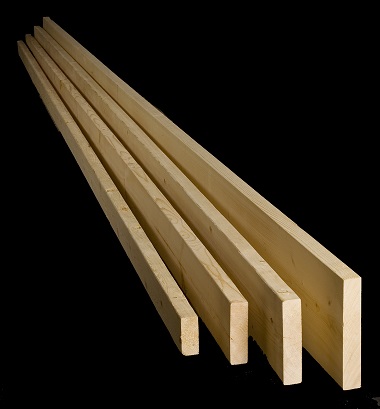Dimension lumber is softwood lumber with a nominal thickness of 5 centimetres (2 inches). It comes in a variety of lengths and widths.

In Canada, most dimension lumber is produced from spruce-pine-fir (SPF). In the United States, southern yellow pine (SYP) is mainly used.
It is the structural softwood lumber used in most wood-based construction in North America. Dimension lumber is also used in wood-frame construction projects of up to six stories.
Technical information
Dimension lumber is graded on the quantity of natural characteristics present in each piece of wood. These characteristics include:
- size and location of knots
- slope of grain
- checks
- wane
- warp

Grading also takes manufacturing defects into account.
The width of dimension lumber is measured in multiples of 5 centimetres (2 inches) and the lengths are measured in multiples of 60 centimetres (2 feet). However, because the wood shrinks as it is dried and planed during production, the actual cross-sectional dimensions are smaller. For example, a “two-by-four” is actually 4 centimetres (1.5 inches) thick and 9 centimetres (3.5 inches) wide in its finished, dry form.
Dimension lumber is usually dried to a moisture content not exceeding 19%. Some dimension lumber is machine stress rated. Dimension lumber is also used to produce glue-laminated timber, one of many products used in mass timber construction projects across Canada.
Deeper dimension lumber (3.5 cm x 24 cm; “two-by-ten”) is used for horizontal elements such as joists and headers. Smaller dimension lumber (3.5cm x 9cm; two-by-four) is used for vertical wall members (studs), top wall plates or as components in floor and roof wood trusses. Some engineered wood products, such as laminated veneer lumber, can replace larger dimension lumber pieces.